15 Types of Ticks in Maine (With Pictures)
-
Pete Ortiz
- Last updated:

There are many different types of ticks in Maine. Some of them can cause disease, while others do not bite humans. It is important to know which ticks are which so that you can protect yourself and your family from tick-borne illnesses.
The 15 Types of Ticks in Maine
1. Deer Tick
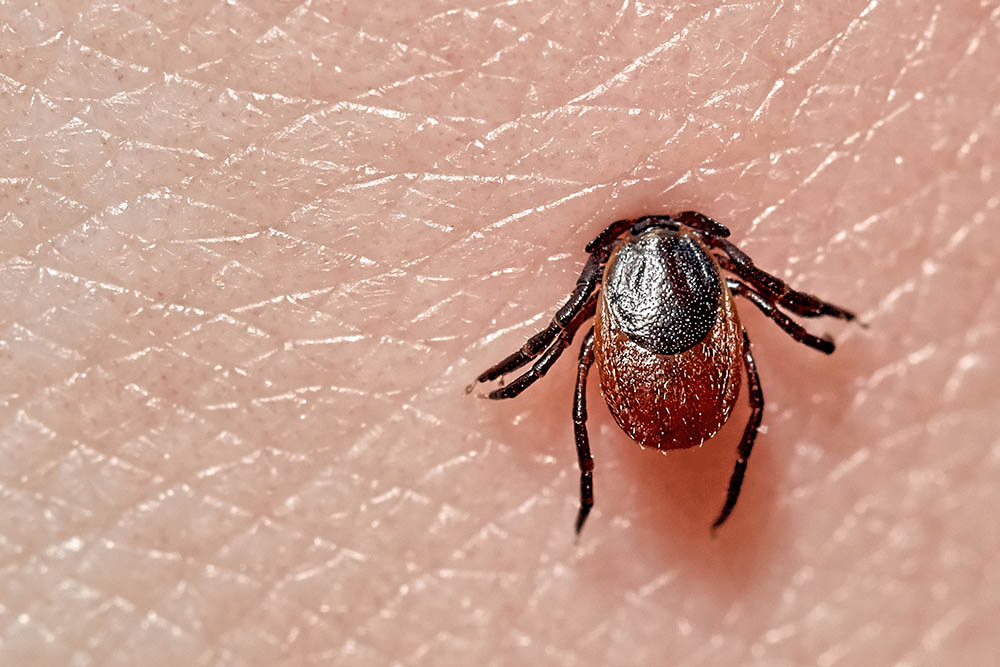
| Scientific Name: | Ixodes scapularis |
| Adult Length: | 1/8 inch (unfed) |
| Active Life Cycles: | Larva, nymph, adult |
These ticks are the most common type of tick in Maine. They are small, dark-colored ticks that feed on the blood of deer and other animals. Deer ticks can carry Lyme disease, so it is important to avoid them if possible.
You might also hear these ticks referred to as black-legged ticks. The lifecycle of a deer tick includes four stages: egg, larva, nymph, and adult.
Although named “deer tick,” this species will feed on everything from small mammals to humans. In fact, every stage starting at larva will feed on humans.
2. American Dog Tick

| Scientific Name: | Dermacentor variabilis |
| Adult Length: | ¼ inch (unfed) |
| Active Life Cycles: | Larva, nymph, adult |
These ticks are larger than deer ticks and are brown or reddish in color. They feed on the blood of dogs and other animals, but they will also bite humans if given the chance. American dog ticks can carry Rocky Mountain spotted fever and tularemia.
After the egg, the American dog tick has three life stages: larva, nymph, and adult. The larva hatches from the egg and immediately begins to feed. Once it has had its first blood meal, it molts (sheds its skin) and becomes a nymph.
Nymphs are similar in size and appearance to adults, but they have not yet mated. After feeding on blood, nymphs molt and become adults. Adult American dog ticks can live for up to three years without blood.
3. Woodchuck Tick
| Scientific Name: | Ixodes cookei |
| Adult Length: | 1/8 inch (unfed) |
| Active Life Cycles: | Larva, nymph, adul |
The woodchuck tick could easily be mistaken for the deer tick to the untrained eye. They are both small, dark-colored ticks that can be found in wooded areas. The woodchuck tick is most active in the spring and early summer months.
This tick feeds on the blood of deer, mice, and other small mammals. Humans can also be bitten by this tick. And although it is not known to transmit many diseases other than the Powassan virus, this particular virus can be deadly.
4. Brown Dog Tick
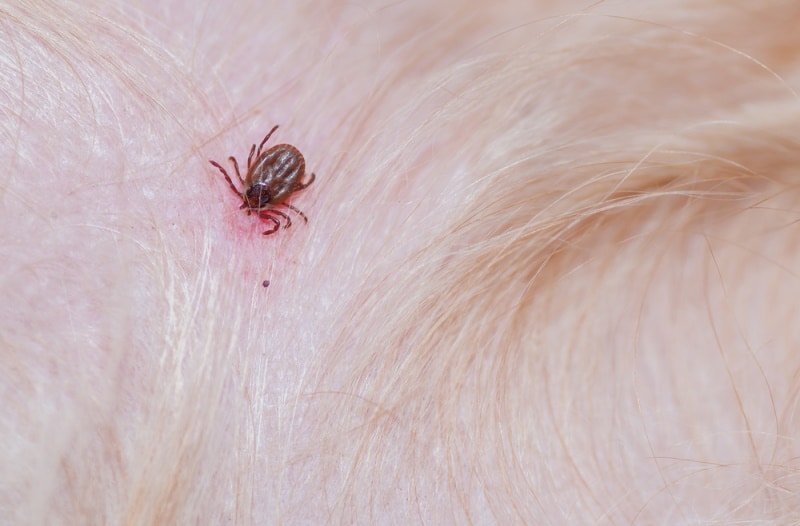
| Scientific Name: | Rhipicephalus sanguineus |
| Adult Length: | 1/8 to ¼ inch (unfed) |
| Active Life Cycles: | Larva, nymph, adult |
As its name suggests, the brown dog tick feeds mostly on dogs, but it will also bite humans if the opportunity arises. This tick is most common in kennels and homes with multiple dogs, as they can easily spread from one animal to another.
The brown dog tick does not normally transmit diseases to humans, but it can carry them from one dog to another. And whereas most species of ticks thrive outdoors, the brown dog tick has adapted its life to live indoors.
5. Gulf Coast Tick
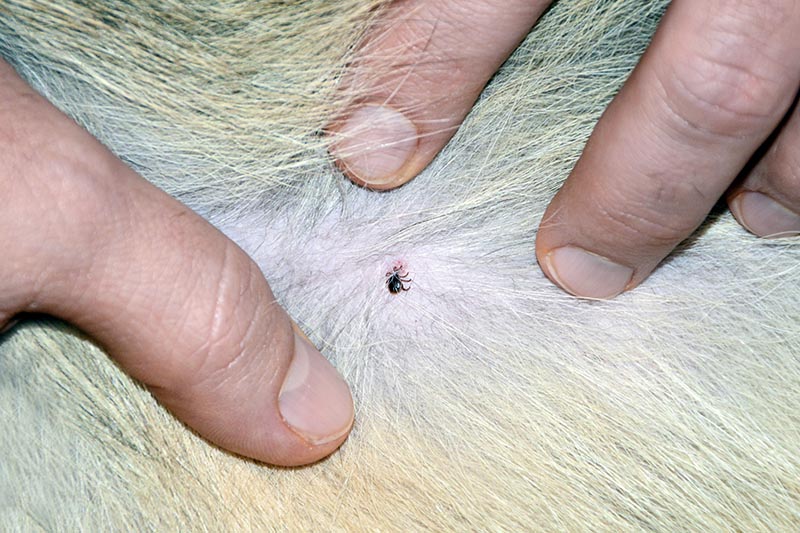
| Scientific Name: | Amblyomma maculatum |
| Adult Length: | ¼ inch (unfed) |
| Active Life Cycles: | Larva, nymph, adult |
The Gulf Coast tick is a reddish-brown or dark-brown tick that is found along the Gulf of Mexico and the southeastern part of the United States. While Gulf Coast ticks are active in Maine, they are not considered to be an established species in the state.
This tick can carry a number of different diseases, including tick paralysis. From larva to adult, the Gulf Coast tick feeds on the blood of livestock and other larger mammals.
6. Ixodes Angustus
| Scientific Name: | Ixodes angustus |
| Adult Length: | 1/8 inch (unfed) |
| Active Life Cycles: | Not fully known |
The Ixodes angustus is common in Maine and Canada. This is a tan-colored tick that is small in size. It can be found on deer, rabbits, and other animals.
Ixodes angustus tick bites can transmit Powassan and Lyme disease, so it’s important to be vigilant if you find one of these ticks on your body. The life cycles of ixodes angustus are understudied and therefore not fully known.
7. Ixodes Brunneus
| Scientific Name: | Ixodes brunneus |
| Adult Length: | 1/8 inch (unfed) |
| Active Life Cycles: | Not fully known |
These coastal ticks aren’t as well-studied as other species of tick. However, they are a great risk to birds, as ixodes brunneus carry avian tick paralysis, which, as the name implies, causes paralysis in birds.
Ixodes brunneus feed on wild turkeys and other game birds. The life cycles of this tick are not fully understood, as research is limited compared to other tick species.
8. Ixodes Dentatus
| Scientific Name: | Ixodes dentatus |
| Adult Length: | 1/8 inch (unfed) |
| Active Life Cycles: | Larva, nymph, adult |
While rare in Maine, the ixodes dentatus has been spotted in the state. As a three-host species of tick, ixodes dentatus feeds from larva to adult.
Feeding mostly on hares and rabbits, this tick species isn’t a threat to humans. It neither feeds on humans nor carries human-infecting pathogens.
9. Ixodes Gregsoni
| Scientific Name: | Ixodes gregsoni |
| Adult Length: | >1/8 inch (unfed) |
| Active Life Cycles: | Not fully known |
Ixodes gregsoni is a recent discovery among tick species. It is a hard-bodied tick that feeds on weasels and mink, but it’s also been known to feed on cats.
This tick can be found in wooded areas throughout Maine, having only recently made its way from Canada after first being discovered in 1998. Due to the relative newness of ixodes gregsoni, the diseases it carries, if any, are unknown.
10. Lone Star Tick
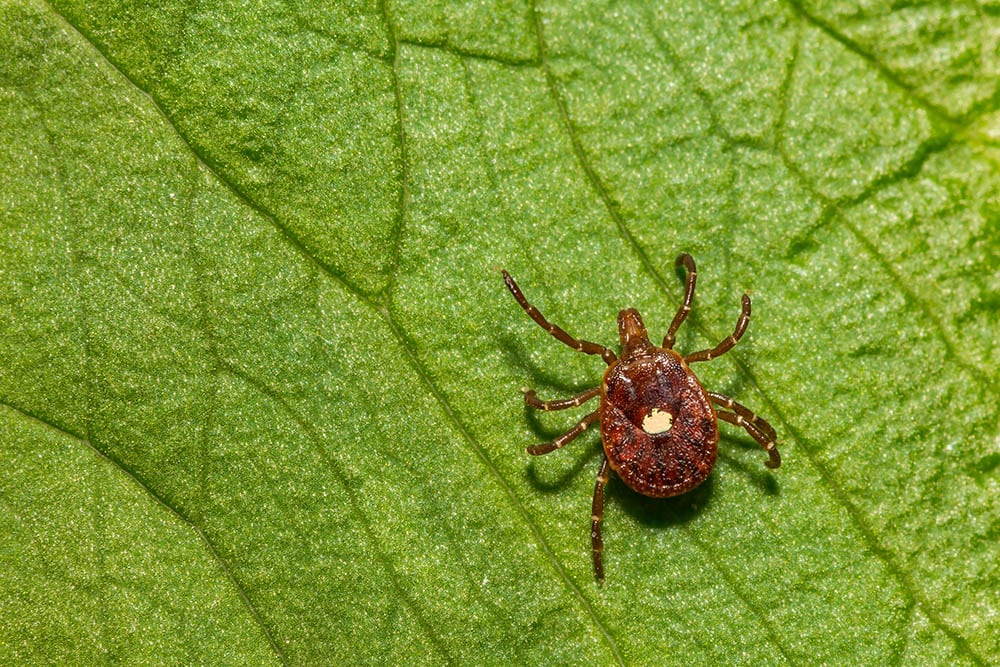
| Scientific Name: | Amblyomma americanum |
| Adult Length: | ¼ inch (unfed) |
| Active Life Cycles: | Larva, nymph, adult |
The Lone Star tick is one of the most common ticks in Maine. It is a small tick that is notable for its red body with a white dot on its back. This tick can cause a number of diseases, including Lyme disease, Rocky Mountain spotted fever, ehrlichiosis, and STARI.
STARI, or southern tick-associated rash illness, is a disease that is similar to Lyme disease. It is caused by the same bacterium, but it does not cause the characteristic bullseye rash. STARI can be difficult to diagnose because its symptoms are similar to those of other illnesses, such as the flu.
11. Mouse Tick
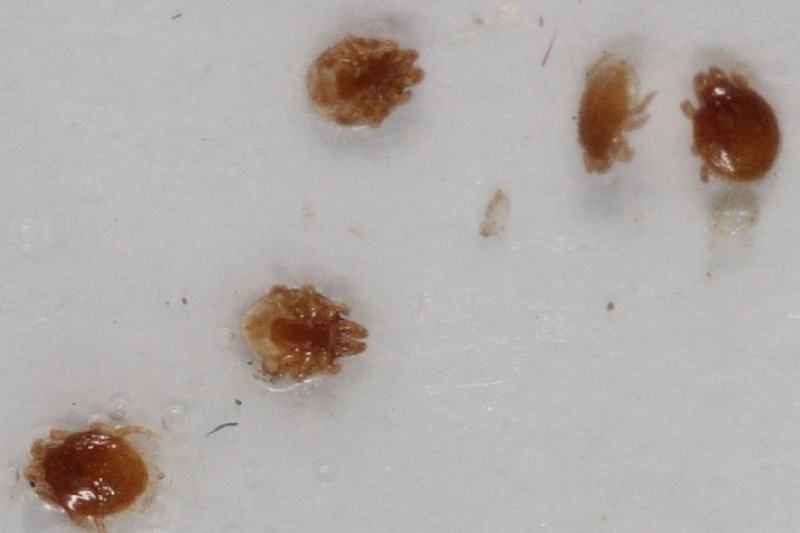
| Scientific Name: | Ixodes muris |
| Adult Length: | ¼ inch (unfed) |
| Active Life Cycles: | Larva, nymph, adult |
The mouse tick, or scientific name ixodes muris, is a species of tick that primarily parasitizes rodents like mice and voles. It’s found in wooded areas across much of the eastern United States, as well as parts of Canada.
This tick can also bite humans and has been known to transmit Lyme disease and other illnesses.
12. Rabbit Tick
| Scientific Name: | Haemaphysalis leporispalustris |
| Adult Length: | 1/8 inch (unfed) |
| Active Life Cycles: | Larva, nymph, adult |
Rabbit ticks are found in wooded areas and are most active in the spring and early summer. They are about 1/8 inch long, brown or reddish-brown in color, and have a hard shell. They are known to carry Lyme disease, Rocky Mountain spotted fever, and other diseases.
13. Seabird Tick
| Scientific Name: | Ixodes uriae |
| Adult Length: | 1/8 inch (unfed) |
| Active Life Cycles: | Larva, nymph, adult |
The Seabird tick is one of the most common ticks in Maine. It is a small dark brown or tan tick that is often found almost exclusively on birds. The Seabird tick is known to carry disease bacteria but is unlikely to affect humans.
Moreover, it begins feeding at the larva stage, with its full life cycle taking up to four years.
14. Squirrel Tick
| Scientific Name: | Ixodes marxi |
| Adult Length: | ¾ inch (unfed) |
| Active Life Cycles: | Larva, nymph, adult |
The Squirrel Tick is a tan or reddish-tan species that is often found on squirrels and other small mammals. They can also bite humans, but it’s more common for squirrel ticks to bite medium-sized mammals if they feed on anything bigger than squirrels.
Squirrel ticks are known to transmit the Powassan virus, which can cause encephalitis (inflammation of the brain) in people.
15. Moose Tick
| Scientific Name: | Dermacentor albipictus |
| Adult Length: | ¼ inch (unfed) |
| Active Life Cycles: | Larva, nymph, adult |
Also called the winter tick, moose ticks are found primarily in the northern parts of the United States, and that includes Maine. Moose ticks are larger than deer ticks and can cause anemia in their hosts.
As a single-host tick species, moose ticks spend their entire life cycle on a moose and are active during all three stages of its lifecycle, from larva to adulthood.
How to Keep Ticks Away from Your Home
There are several things you can do to reduce the number of ticks around your home:
- Keep your lawn trimmed and tidy. Ticks like hiding in tall grass, so keeping your lawn short will make it less inviting for them.
- Get rid of any leaf litter or other debris around your property. This includes things like firewood, construction materials, and even lawn furniture.
- Seal any cracks or crevices around your home. Ticks can squeeze through very small spaces, so it’s important to make sure there are no openings for them to get inside.
- Build a barrier. If your home is near or surrounded by woods, building a barrier will help keep ticks out. This can be something as simple as mulch or hedges.
- Use tick-repellent products. These are available in both spray and granular form and can be applied to your lawn and other areas of your property.
- Check yourself, your family, and your pets for ticks regularly.
- Stay in the middle of the trail when you’re hiking. This will help you avoid contact with vegetation where ticks may be lurking.
- Wear light-colored clothing so ticks are easier to spot.
- Wear long pants and long sleeves when you’re in an area where ticks are known to live.
- Use insect repellent. Repellents that contain DEET, picaridin, or oil of lemon eucalyptus are effective against ticks.

What to Do if a Tick Bites You
If you find a tick on yourself, your family member, or your pet, there are a few things you should do:
- Use sharp tweezers to grab onto the tick, getting as close to the surface of your skin as you possibly can.
- Pull the tick away from the skin with a steady, even motion. Do not twist or jerk the tick, as this can cause its mouthparts to break off and stay in the skin.
- If the mouthparts do break off, remove them with the tweezers. If they’re difficult to remove, you can leave them alone and let the skin heal.
- Clean the bite area with soap and water or antiseptic wipes.
- Apply a cold pack to the area for a few minutes to help reduce swelling and pain.
- Watch for signs of infection, such as redness, warmth, or pus. If you see any of these signs, call your doctor right away.
Ticks are small, parasitic creatures that can cause serious health problems if they bite you. There are a variety of tick species in Maine, and each one is capable of transmitting different diseases.
The best way to protect yourself from these diseases is to avoid contact with ticks altogether.
However, if you do find a tick on your body, it’s important to remove it properly and watch for any signs of infection. By taking these precautions, you can greatly reduce your risk of getting sick from a tick bite.
Conclusion
With so many different types of ticks in Maine, it is important to be vigilant and take precautions to avoid being bitten. Wearing long pants and shirts, using insect repellent, and checking your body for ticks after spending time outdoors can all help reduce your risk of being bitten.
If you find a tick on your body, it is important to remove it carefully and watch for any signs of illness. If you do experience any symptoms, be sure to see a doctor right away.
Featured Image Credit: Jay Ondreicka, Shutterstock
Contents


